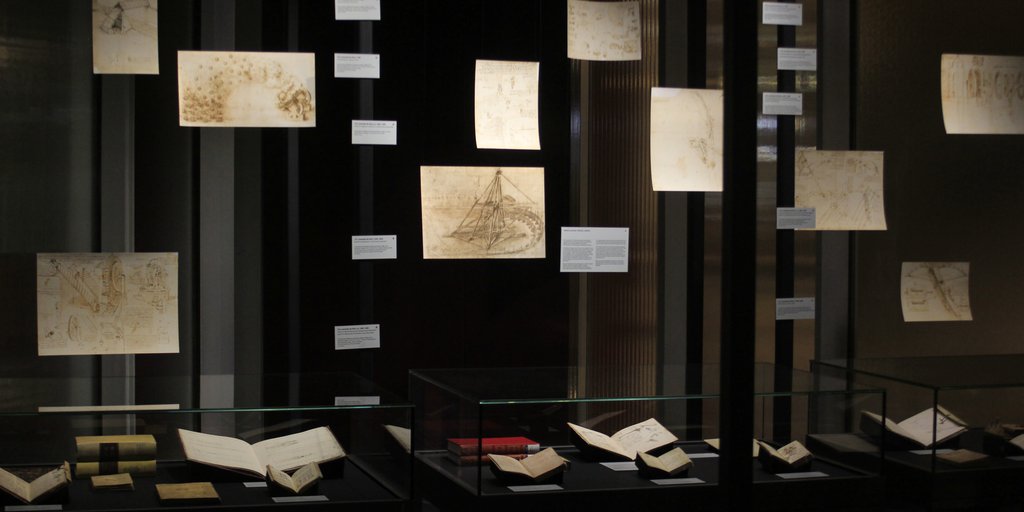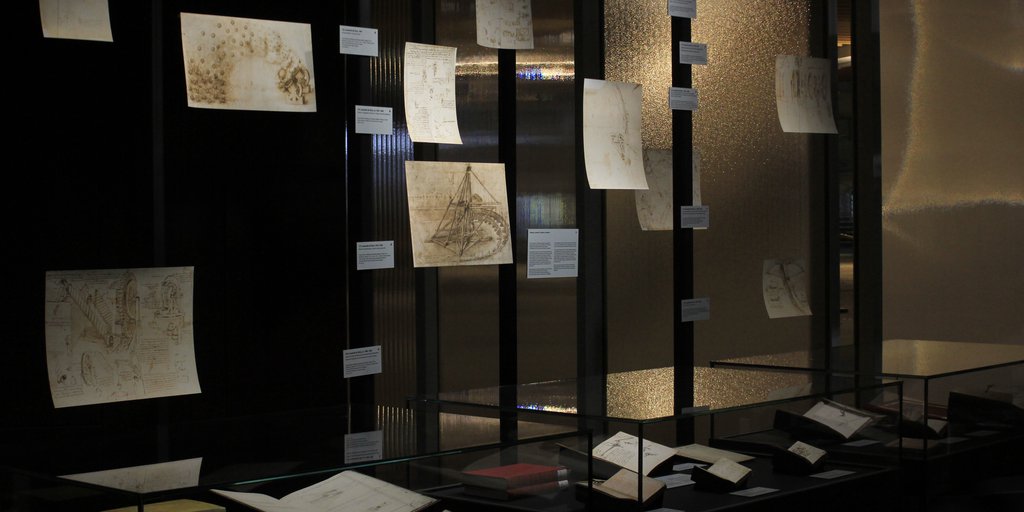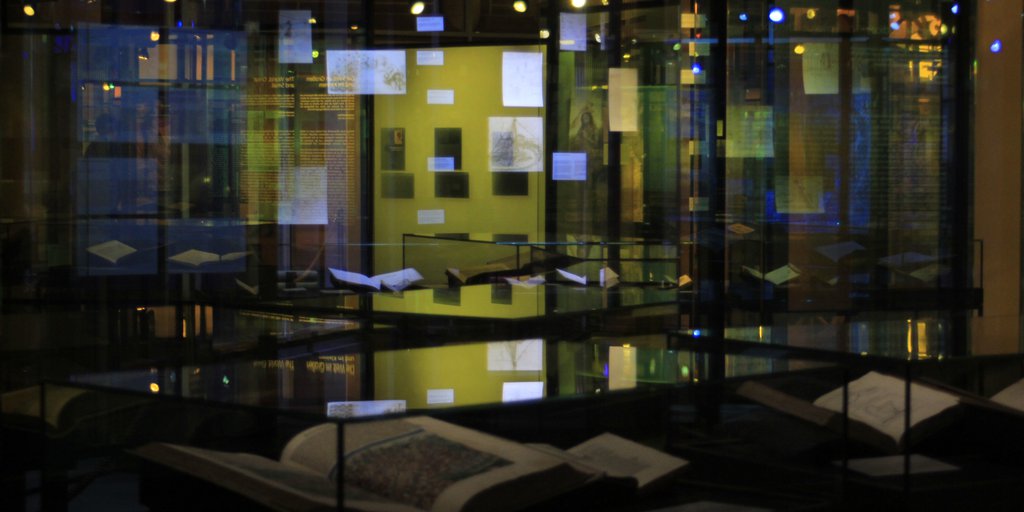
Epilogue: The Codices <
This is a collection without order, compiled from many papers that I have copied here,
hoping to put them in their respective order, according to the subjects they address …
Leonardo da Vinci
Codex Arundel, fol. 1r. Translation: Elizabeth Hughes
Leonardo’s surviving literary estate comprises over 4,000 sheets; a total of 22 volumes of illustrated manuscripts, generally known as codices, still exists today. The material is extremely heterogenous. Alongside pocket-sized sketchbooks with jottings made on the spot purely for his own use, there are large-format clean copies that seem to address an audience. What the volumes have in common is their thematic diversity, and all show traces of continual use and revision. At his death, Leonardo left the volumes to his collaborator and heir Francesco Melzi (1491/92–1567). Melzi’s heirs sold a large part of this legacy to the sculptor Pompeo Leoni (ca. 1533–1608). In 1637 the collector Galeazzo Arconati (before 1592–1649) donated several of these manuscripts to the Biblioteca Ambrosiana in Milan. They ultimately reached Paris as part of Napoleon’s spoils of war where most of them are still kept today—fortunately mostly in their original binding. Other codices took entirely different paths—though under similarly dramatic circumstances.
Codices <
 | 111.
Problem-solving 1495–1500 |

Leonardo used these pocket-sized notebooks as workbooks for field studies. He sorted much of their contents and made clean copies which he transferred to larger formats.
He used the notebook shown here mostly as an exercise book for his own study of the foundations of Euclid’s geometry, particularly the third lesson of the first book, as the heading reveals. This provided the starting point for solving advanced geometric problems (35 ■). On this double page, Leonardo demonstrated three different kinds of triangles: acute angle, right angle, and isosceles. The unconnected remark “ermete filosofo” refers to the enigmatic writings of Hermes Trismegistos, a group of neo-Platonic books translated by the Florentine humanist Marsilio Ficino and which Leonardo probably knew from his early years in Florence.
References
Bambach, Carmen C. 2019. Leonardo da Vinci Rediscovered. Vol. 2: The Maturing of a Genius 1485–1506. 4 vols. New Haven / London: Yale University Press, 85–86.
Rinaldi, Furio. 2013. De ludo geometrico. La Matematica e la Geometria di Leonardo. Disegni di Leonardo dal Codice Atlantico. Exhibition catalogue Biblioteca Ambrosiana, Milan, 10.12.2013–9.3.2014. Novara: De Agostini.











